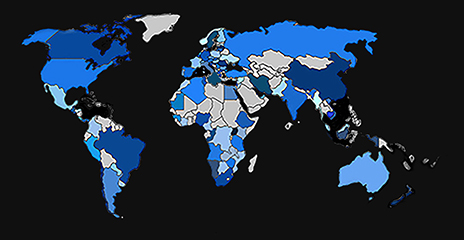
By Jeff Swiggett, Managing Partner of VR Mergers & Acquisitions in New Haven, Connecticut, USA. Jeff Swiggett is also "President of the M&A Source", the trade association for the middle market in the United States. CBA and VR are allies in the Exclusive Global Alliance of M&A Advisors.
Mergers and acquisitions have become a major feature of the global financial marketplace. Deal participants include public and private companies of all sizes, investment banks, business brokers, commercial banks, private equity funds, institutional investors, hedge funds, and legal and accounting firms.
To track this active and diverse sector, M&A professionals watch a variety of key trends and measures to help evaluate prices, financing, and risk.
The economy
The current health and direction or the economy is of tremendous importance to mergers and acquisitions. Simply put, M&A activity requires a healthy economy to thrive. Experts, therefore, keep an eye on economic indicators such as gross domestic product, job growth, unemployment rates and others. Consumer and business spending - the main drivers of economic growth - also are important to track, as are housing starts and home sales.
The rate of inflation and the Federal Reserve's discount rate, the interest the Fed charges banks for borrowing short-term funds, affect both the overall economy and the financial markets because they in turn set commercial interest rates. When interest rates are low, buyers can afford the credit they need to make acquisitions, whereas high interest rates curtail deal activity by making it too expensive to be profitable.
The corporate sector
Corporations act as both buyer and seller, so their financial health merits special attention. M&A experts look at market data on the growth or decline of corporate profits, debt-to-equity ratios, price earnings ratios, pricecash-flow ratios and ratios of balance sheet cash to business market value for a range of business segments. These rates and ratios signal the profitability of businesses, how expensive they would be to buy, and how much cash they have available to buy other companies.
Metrics such as these are available for public companies and those private companies that have chosen to participate in financial reporting surveys. Databases such as Standard & Poor's, Thomson Financial and FactSet Mergerstat are sorted for company size, industry, financial strength and other attributes of interest to prospective buyers and sellers.
The transaction cycle
Shaped by general economic and corporate activity, M&As often occur in a circular pattern of purchases and sales facilitated by private equity firms and other intermediaries, such as hedge funds, insurance companies and pension funds.
For example, you can get transaction data for the middle market broadly defined as companies with sales between $10 million and $500 million. The data can be refined further for narrower ranges such as revenues of $10 million to $100 million.
Valuation and debt
Valuations, or the prices for which companies sell, are perhaps the most closely watched metric in the M&A arena. A business's value often is expressed as a multiple of the ratio of a company's selling price to the cash flow it generates, commonly defined as earnings before interest, taxes, depreciation, and amortization (EBITDA). Alternate valuation metrics may include a multiple of enterprise value (the selling price of the business plus amount of net debt on its balance sheet) to EBITDA, or a multiple of revenues.
Given the extensive use of debt in M&A transactions, leverage, and credit-quality metrics generally receive as much attention as valuation ratios. Two ways of tracking leverage, the amount of debt that acquirers take on to finance their purchases, are the total dollar volume of M&A related borrowings and the multiple of total debt to EBITDA in new deals.
Integrating complex information
As a seller or buyer, you may not have the economic and financial background to understand the complexities of the M&A marketplace. But having some basic knowledge of how your advisors view broad trends can help you establish a better working relationship with them and smooth the transaction process.
